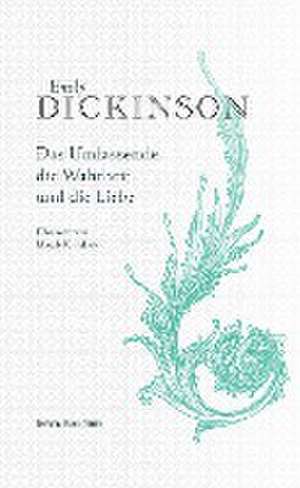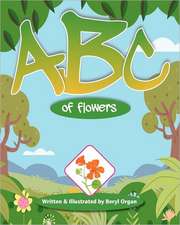Emily Dickinson
Autor Emily Dickinson Traducere de Magda Kirndörferen Limba Engleză Hardback – 19 sep 2022
The same inimitable voice and dazzling insights that make Emily Dickinson’s poems immortal can be found in the whimsical, humorous, and often deeply moving letters she wrote to her family and friends throughout her life. The selection of letters presented here provides a fuller picture of the eccentric recluse of legend, showing how immersed in life she was: we see her tending her garden; baking bread; marking the marriages, births, and deaths of those she loved; reaching out for intellectual companionship; and confessing her personal joys and sorrows. These letters, invaluable for the light they shed on their author, are, as well, a pure pleasure to read.
| Toate formatele și edițiile | Preț | Express |
|---|---|---|
| Paperback (1) | 37.64 lei 3-5 săpt. | +17.57 lei 6-12 zile |
| Orion Publishing Group – 6 oct 2022 | 37.64 lei 3-5 săpt. | +17.57 lei 6-12 zile |
| Hardback (2) | 72.02 lei 3-5 săpt. | +29.68 lei 6-12 zile |
| Moondance Press – 30 sep 2016 | 72.02 lei 3-5 săpt. | +29.68 lei 6-12 zile |
| Knopf Doubleday Publishing Group – 19 apr 2011 | 104.87 lei 3-5 săpt. |
Preț: 203.78 lei
Nou
38.100€ • 40.41$ • 32.55£
Carte indisponibilă temporar
Specificații
ISBN-10: 3959085605
Pagini: 527
Dimensiuni: 132 x 204 x 39 mm
Greutate: 0.64 kg
Editura: Thelem Universitätsverlag
Descriere
'Not knowing when the dawn will come I open every door' Emily DickinsonThe very best of Emily Dickinson's poems in a beautiful gift edition
Notă biografică
Emily Dickinson was an American poet whose writing was heavily influenced by the Metaphysical poets of seventeenth-century England, as well as her reading of the Book of Revelation and her upbringing in a Puritan New England town. In addition to poetry, Dickinson had a passion for baking and botany, and became reclusive later in life. While Dickinson was extremely prolific as a poet and regularly enclosed poems in letters to friends, she was not publicly recognized during her lifetime. The first volume of these works was published in 1890, well after her death in 1886. A full compilation,The Poems of Emily Dickinson, wasn’t published until 1955, though previous iterations had been released. Dickinson has since been regarded as one of the most important figures in American poetry.
Susan Snively, PhD, is the author of four books of poetry: From This Distance (Alice James, 1981), Voices in the House (Alabama Poetry Series, 1988), The Undertow (University of Central Florida, 1998), and Skeptic Traveler (David Robert Books, 2005). She has taught at Smith College, Mount Holyoke College, and Amherst College and has received fellowships from the NEA and the Massachusetts Artists Foundation. For 27 years, she directed the Writing Center at Amherst College and is the Associate Dean of Students. She earned her BA from Smith College and her MA and PhD from Boston University.
Dr. Snively has given readings and lectures at the Salem Athenaeum, Marlboro College, University of Louisville, Wesleyan University, the Bread Loaf Writers Conference, the Monadnock Lyceum Lecture series in Peterborough, NH, and elsewhere. A guide at the Emily Dickinson Museum, Snively wrote and narrated the films "Seeing New Englandly," and "My Business is to Sing," produced by Ernest Urvater, in the series "Angles of a Landscape." She regularly leads discussions on various aspects of Dickinson for the museum's monthly poetry group. Her first novel, The Heart Has Many Doors, about Dickinson's love affair with Judge Otis Phillips Lord, was published in February 2015, by White River Press. She lives in Amherst with her husband, Peter Czap.
Christine Davenier worked as a teacher for three years before illustrating her first book in France in 1988. Since 1999, Christine has also been illustrating books in the United States. Her energetic style and exuberant characters have helped her books garner Parents' Choice and Booksense Top Ten awards. In 2002, The First Thing My Mama Told Me (North-South) was chosen as a New York Times Best Illustrated Book. More recently, books in the Very Fairy Princess series (Little, Brown), written by Julie Andrews and Emma Walton Hamilton, have spent several weeks on the New York Times and Publishers Weekly children's bestseller lists. Christine has also illustrated bestsellers by Judith Viorst, Jack Prelutsky, Kimberly Willis Holt, Madeline L'Engle, Peter Yarrow, and Amanda Peet, as well as the Iris and Walter series Miss Lina's Ballerinas series.
Extras
Emily Elizabeth Dickinson was born on December 10, 1830 in Amherst, Massachusetts, and she died there fifty-five years later on May 15, 1886, in her "father's house," where she had spent almost all of her adult life in seclusion. The "weary life in the second story," as she called herself with typical Dickinsonian perspicacity, never forsook human relationships, however, daily participating in a busy household and sending herself out into the world through her passionate, witty, mournful, and celebratory letters.
"My business," she told friends, "is to love" and Dickinson loved with a flame turned up to the white heat. She loved her parents and her sister and brother; her girlhood and adult friend; teachers and studies and books; the busy college town of Amherst; and the Springfield newspaper with its amusing local stories. She loved utterly Sue Gilbert, who would marry her brother Austin; and the mysterious "Master" of the famed "Master Letters" (who has never been identified but may have been Charles Wadsworth or Otis Lord or Samuel Bowles). She loved the rebirth of spring; her beautiful garden; the wild flowers of the fields; butterflies, toads, and bees; her huge brown Newfoundland, Carlo; the town's children for whom she baked cookies; the Brontës and George Eliot, the Brownings and Shakespeare; many church sermons (but certainly not all); her travels as an exuberant young girl to Washington and Philadelphia and Virginia. She was charmed by the circus that passed beneath her window and left a bright spot of red in her hyper-alert mind. She celebrated the births of babies and announcements of marriages in words of joy and kindness. Emily Dickinson found life startling and ecstatic and comical and terrible, often all at the same time. She lived in awe.
Her letters, with their feverish observations, metaphors, epigrams, allusions, paradoxes, hyperbole, and rapid leaps of imagination, must have confounded their recipients — even if they were used to "Emily being Emily." Each day she lived and expressed with an intensity and a devotion that no one she knew could emulate, much less reciprocate. She would at times become wounded when her letters, into which she poured so much of herself, went unanswered, leaving her vulnerable, almost in despair. "You are like God," she wrote to a friend who had not written back. "We pray to Him and He answers 'No.'" Absence was unbearable for this poet, as it is for many, but Dickinson's losses were multitudinous and they started early in her childhood and painfully continued throughout her life. She cherished the birds that flew away because they always came back, unlike the endless stream of loved ones whose deaths undid her.
I have devoted one chapter to Dickinson and Thomas Wentworth Higginson, the prominent man of letters who eventually helped bring her poetry to the world's attention. It is one of the greatest moments in world literature when Higginson opened that first letter from an unknown correspondent in April 1862. "Are you too deeply occupied to say if my Verse is alive?" she inquired. Her ensuing letters to him were suddenly different in tone, more breathless, deeper, if that is possible, than the letters to friends and family members. These are the words of a poet on the subject of her own genius. "Vesuvius at home" is erupting, as she announces herself with the utmost modesty, yet in earnest, and it is absolutely palpable. You can feel it happening.
Dickinson's life has always invited conjecture. She gives no reasons in the letters for her increasing isolation. We see her standing shyly at the edge of a crowd, looking on; going out only at dusk; and then not going out, with the tacit understanding of her protective family. Everyone knew she wrote poems, but no one knew the extent of her work until after her death when her sister Lavinia discovered almost 200 of the poems in Emily's sun-lit room on the second floor of the Homestead. The prolific Dickinson wrote a mind-boggling 1,775 poems of surpassing originality, numinousness, and profundity. It is estimated that she wrote 366 poems in one year alone.
In the end, Dickinson was what she was meant to be, could really only be — a poet of the highest order and rarest concentration — and her great gift subsumed the rest as she moved irrevocably deeper into her own mind and heart.
The letters are mined with phrases and entire lines that will startle readers who recognize them from the poems. There is even a real fly that may remind the reader of the immortal one "with Blue — uncertain stumbling Buzz —." The feeling is one of plunging into the teeming source from which Dickinson's art was distilled. Reading these letters is as close as we can come to being inside Emily Dickinson's alive mind as it engaged with the world around her. Almost a century and a half after she asked Higginson to "say if my Verse is alive," her words still take one's breath away.




